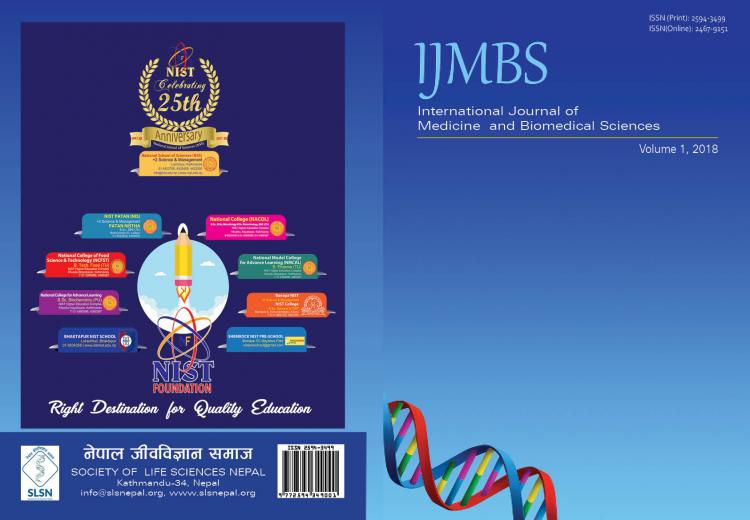Use of Pleural Fluid C- Reactive Protein and comparison with Light’s criteria to differentiate Exudative from Transudative Pleural Effusions in Nepalese Population.
DOI:
https://doi.org/10.55530/ijmbiosnepal.v2i1.22Keywords:
C-reactive protein, Pleural effusion, LDH, Malignant pleural effusion, Tubercular effusion proteinAbstract
Pleural effusion is a common medical problem with diagnostic dilemma, this study was conducted to determine if C-
Reactive Protein level in pleural fluid is a better diagnostic tool in differentiating exudative and transudative pleural
effusion, to compare with parameters of modified Light’s criteria and its application in Nepalese population.
This was an Analytical, Cross-Sectional, Hospital Based Observational study of patients admitted at Department of Medicine, Bir
Hospital during period of one year (January 2014-december 2015). A total of 86 patients with Unilateral Pleural effusion
whose cause was unknown were enrolled. Diagnosis of pleural effusion was established by a detailed history, physical
examination, chest radiograph, ultrasonography and CT scan in few cases.
Out of 86 samples examine half of them were smokers and smoking had more association with females (58%). Cut-off values of pleural fluid CRP level ≥ 10 mg/dl showed sensitivity of 87.60% where as in case of clinically identified transudates, 1 transudates out of 13 were misclassified as exudates. The specificity is 92.30%, the positive predictive value and negative predictive values
were 98.14%, and 37.50% with a significant p value of <0.001. All transudates were classified correctly as transudates by
CRP level > 30 mg/dl, whereas 44 exudates were misclassified as transudates. This criterion had a sensitivity, specificity,
positive predictive value and negative predictive values of 100%, 36.23%, 27.87% and 100% respectively with a significant p value of <0.001. On evaluating the individual parameters of Light’s Criteria; Pleural fluid LDH level > 2/3rd of LDH
level of normal serum classified 64(74.41%) cases of pleural effusion as exudates, this criteria had a sensitivity of 86.30%,
specificity of 92.30%, positive predictive value of 98.43 % and a negative predictive value of 54.55 % with a significant p
value of< 0.001and Kappa value is 0.77.While on pleural fluid to serum LDH ratio >0.6, 59 (81.94%) exudates were
correctly classified as exudates whereas 13 (18.05%) exudates were classified falsely as transudates. This study could be applicable to our population as well, however multi centric studies with larger sample size are necessary.
Downloads
Published
How to Cite
Issue
Section
License
Copyright (c) 2017 International Journal of Medicine and Biomedical SciencesIJMBioS follows the following Terms and License of the manuscript under Attribution-NonCommercial 4.0 International (CC BY-NC 4.0) where Author and Journal are can Share — copy and redistribute the material in any medium or format and Adapt — remix, transform, and build upon the material, and it is Non-Commercial.





